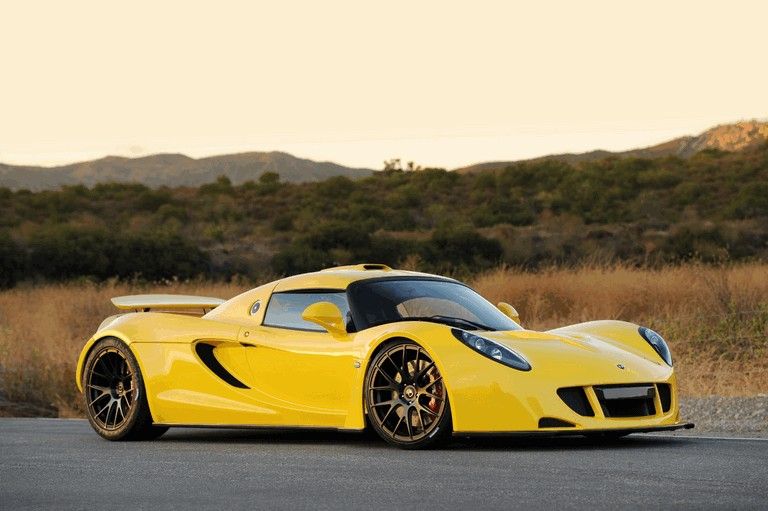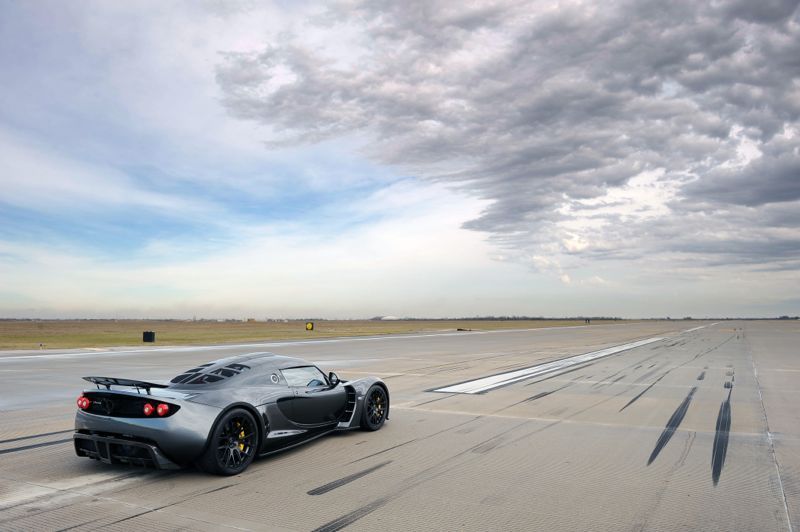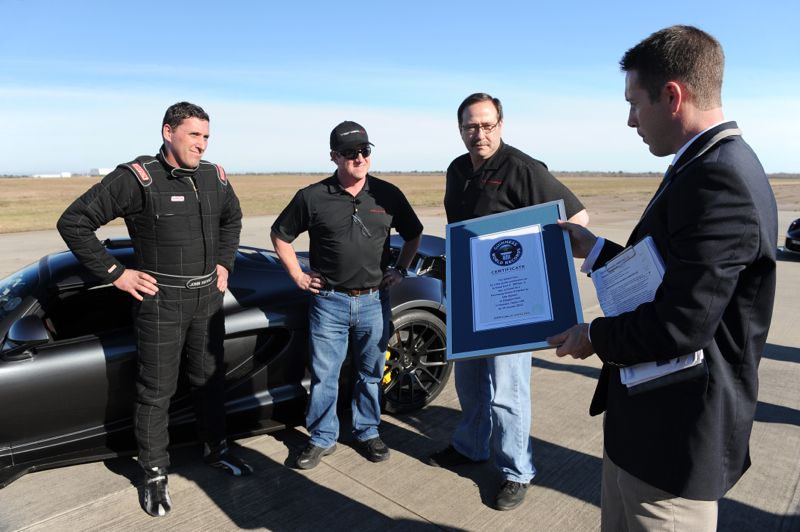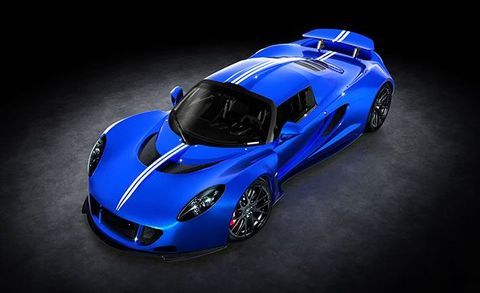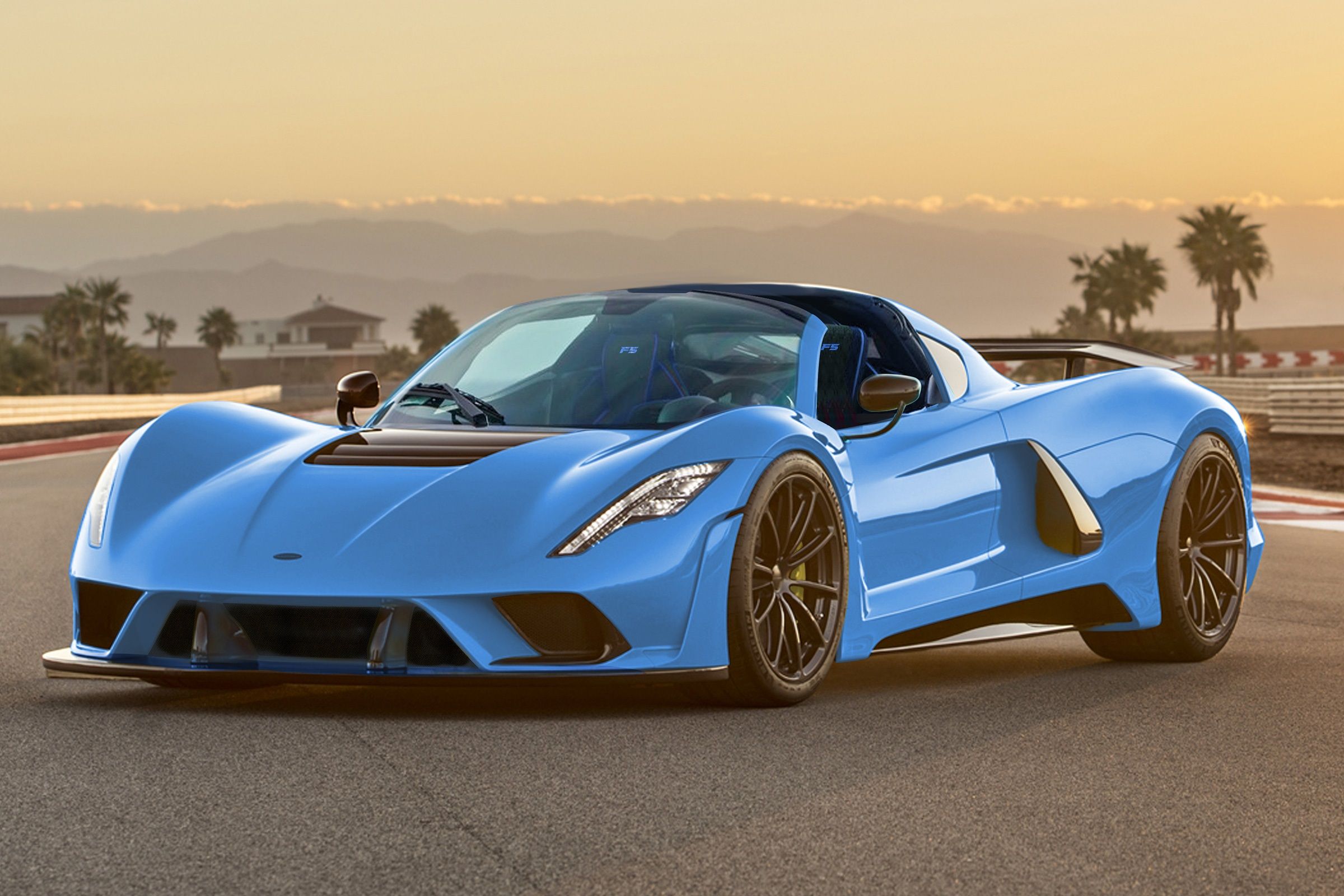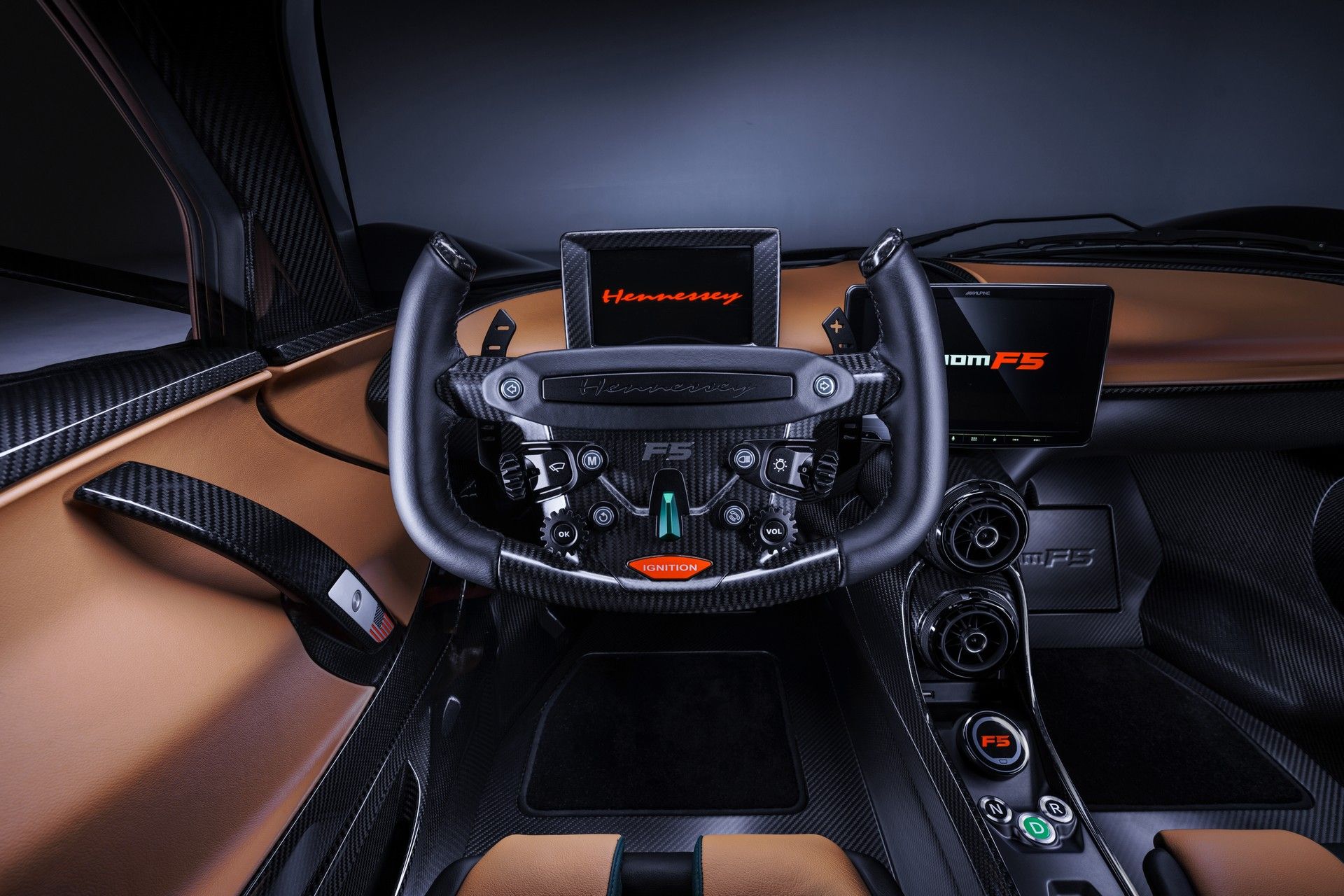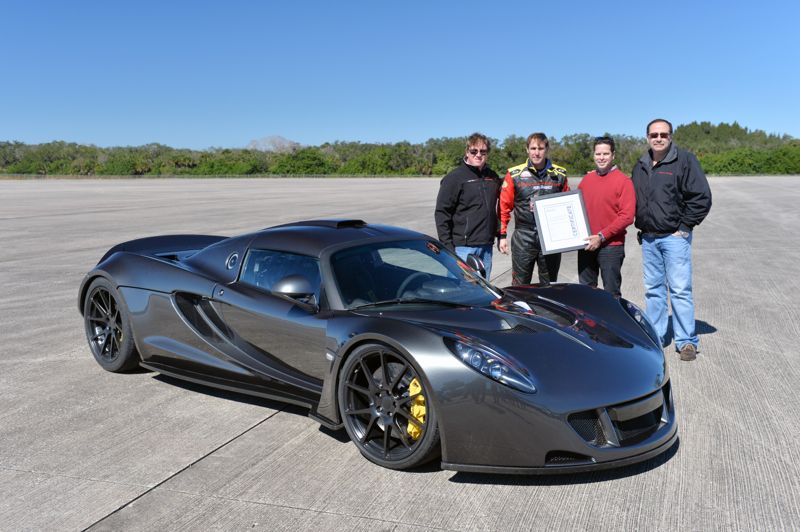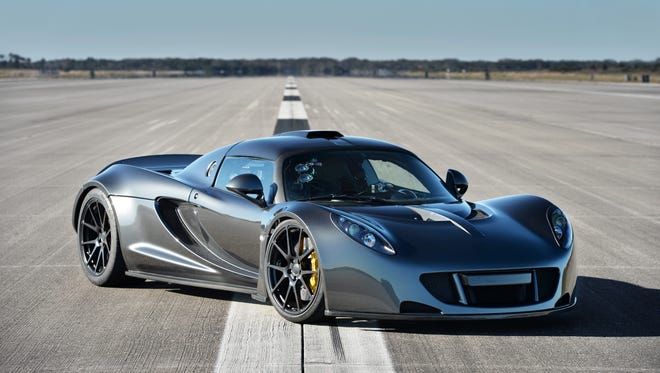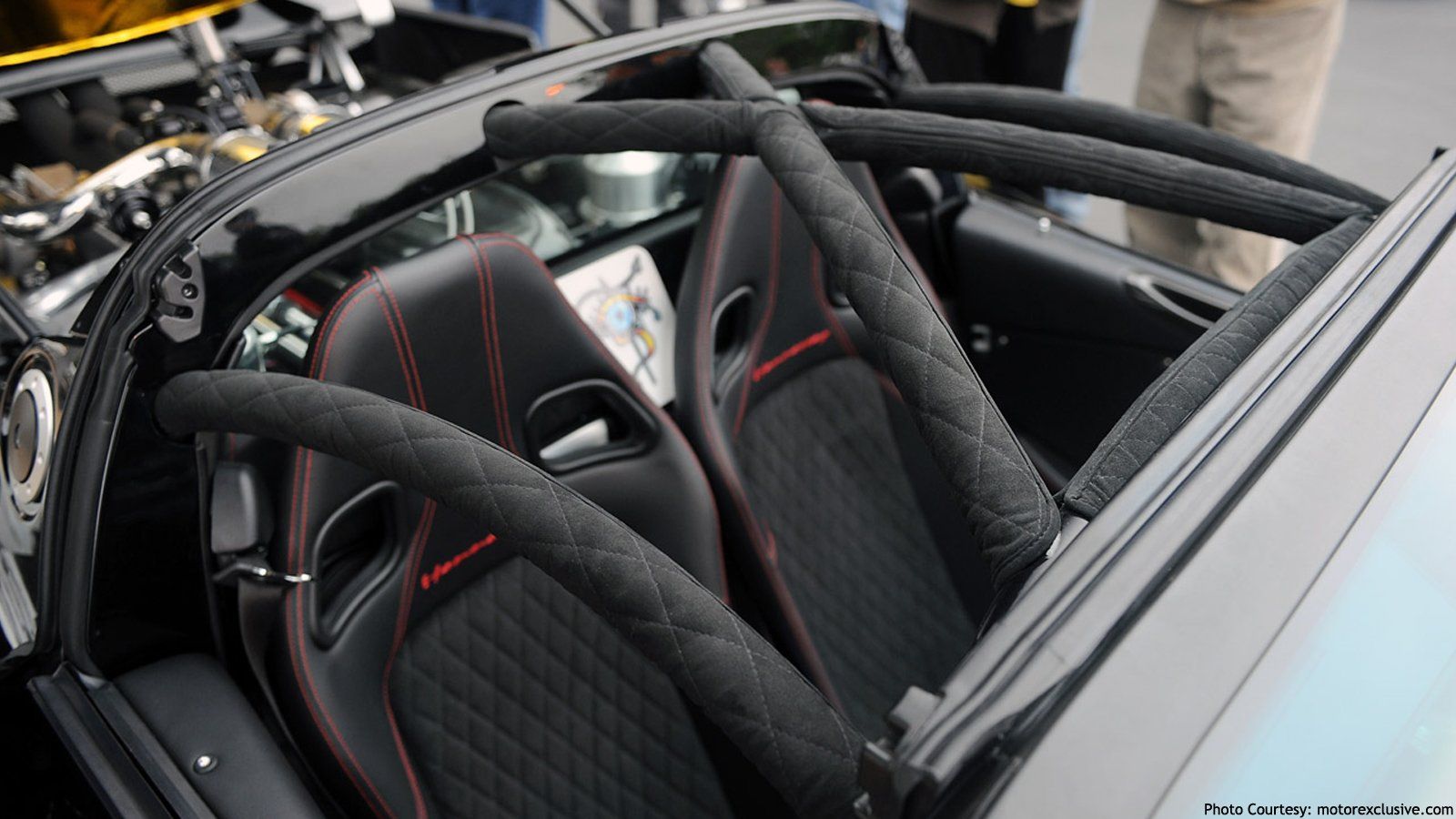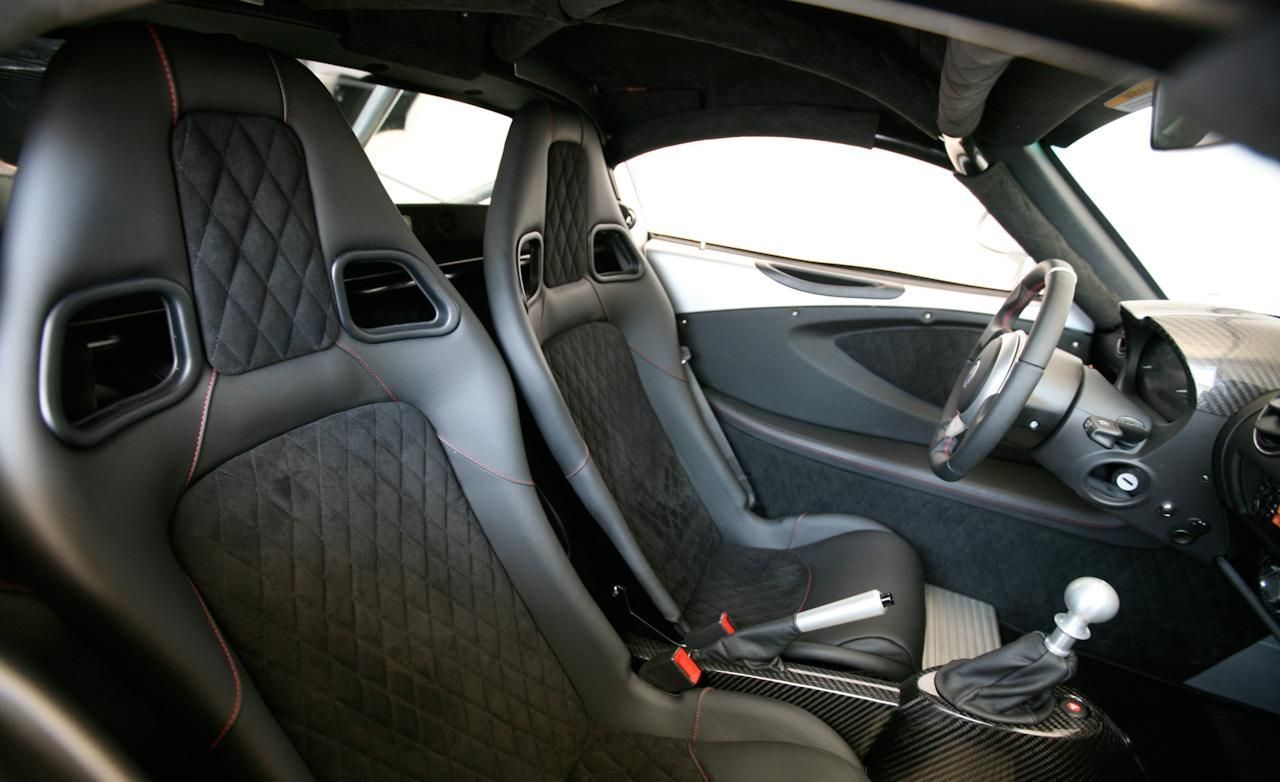The Hennessey Venom GT is a 2-door supercar with model years from 2011 through to 2017. With an incredible zero to 60 acceleration rate of 2.4 seconds and a top speed of 270 mph, the Venom GT is a stand-out high-performance ride.
With these qualities, the Venom GT has achieved some incredible feats, including the breaking of a world record. Let's take a look at ten fascinating facts about the Hennessey Venom GT.
10 The Venom GT Is Very Lightweight
One key feature of the Venom GT is its carbon fiber body and wheels. These contribute to a light 2,743 lb curb weight. Carbon fiber is a fantastic material since it is incredibly light, strong and provides resistance to both corrosion and stress. This sports car also comes with Surface Transforms carbon-ceramic rotors with a size of 380mm each.
The lightweight nature of carbon fiber certainly helps the Venom GT to accelerate as fast as it does. This brings us on to the second fact in our list, as the acceleratory prowess of the Venom GT helped it break a world record in 2013.
9 The Venom GT Set A Guinness World Record
The Venom GT set a new world record in January 2013, when it became the fastest road-legal vehicle based on its zero to 186 mph acceleration. This is converted from zero to 300 kph acceleration. The record set was an average of 13.63 seconds. This destroyed the previous 21.19-second record set by the Koenigsegg Agera R in September 2011. The record-breaking runs took place on the Space Shuttle runway at the Kennedy Space Center in Merritt Island, Florida.
On top of this record, the Venom GT also established a new unofficial 0 to 200 mph acceleration record of 14.5 seconds. This beat the Agera R's record of 17.7 seconds. This made the GT the unofficial fastest accelerating road-legal vehicle globally. According to Fastest Laps, the Venom GT remains the 18th fastest car for zero to 300 kph, with the Porsche 919 Hybrid MK II topping their list at 8.4 seconds.
8 There Was The World's Fastest Edition
In 2014, Hennessey Performance Engineering manufactured the Venom GT World's Fastest Edition or WFE. This rendition of the Venom GT coupe was produced to mark the Venom GT breaking the zero to 300 km/h acceleration Guinness World Record. Only three of this super rare model were produced. Its model year was 2014.
The WFE sold for $1.25 million, and each of the three units were purchased soon after the model was announced. The Venom GT WFE was one of the rarest supercars ever produced. According to the founder of the manufacturer, John Hennessey “(They) wanted to offer a special paint scheme that would incorporate the colors of the American flag." That being the same flag that was flown out of the Venom GT when it broke a world record.
7 Steven Tyler Inspired The Creation of The Venom GT Spyder
In the early 2010s, Steven Tyler, the lead singer of Aerosmith, decided he wanted to order a Venom GT. Sometime around mid to late 2011, he asked the carmaker if they could create an open-top model of the Venom GT. This request was the inspiration behind the design and manufacturing of the Venom GT Spyder. The new design would see some structural alterations that added about 30 lb to the vehicle's curb weight.
For the 2013 model year, out of the five GT Spyder's planned, Tyler got one first. In January 2017, the vehicle was sold in Arizona for $800,000. In the case of the 2016 model year, the Spyder was given an additional 207 hp to make over 1,450 hp altogether. Five Spyders were initially produced before the Final Edition model was sold for the model year 2017. That brought the total number of Venom GT Spyders to six.
6 There Was A Final Edition
In 2017, the manufacturer produced a Final Edition of the Venom GT as a single unit. Its purpose was to honor the Venom GT's six years of production, marking the end of the supercar as a production model. Though it had the same engine output as the Spyder, it had a decreased curb weight with roughly 9 lb shaved off.
The Spyder FE had a Glacier Blue livery that used double narrow white stripes. The Spyder FE was cost $1.2 million and was pre-sold before it even made a debut publically. With a twin-turbo 7.0-liter V8 engine, it, as with the original Spyder FE, produced 1,451 bhp. The final edition marked the end of this incredible short-lived and limited sports car.
5 Succeeded By The Venom F5
The Venom GT gave way to the Venom F5, which went on sale late last year. In 2017, Hennessey Special Vehicles was established to translate the best of the GT into the F5. The division was asked to learn from what it knew and experienced from the Venom GT when designing and produced the F5. The Hennessey Venom F5 is assembled in Sealy, Texas, which is the same line that completed manufacturing of the Venom GT, although the GT's chassis components were put together in Hethel, England.
In November 2017, a mock-up of the F5 was put on display in Las Vegas at the SEMA Show. This prototype, however, was all exterior, as it had no interior or engine. The Venom F5 entered production in 2020 and debuts for the 2021 model year. This 2-door sports coupé has butterfly doors, a rear mid-engine, and rear-wheel drive, as well as a 6l twin-turbocharged V8 engine. Though the body and chassis of the Venom V5 consist mainly of carbon fiber, it does have a curb weight of around 3,000 lb, making it noticeably heavier than the Venom GT.
4 The Venom GT Is Inspired By The Lotus Exige And Elise
Interestingly, this supercar is based on the Lotus Exige and Elise. The Venom GT makes use of a highly modified chassis of both the Exige and Elise. Among the components taken from the Exige are the roof, side glass, cockpit, doors, windscreen, HVAC system, headlamps, and floorpan. This is despite Hennessey lacking any direct links to Lotus Cars.
Similarly both Lotus vehicles were two-door sports cars. According to John Hennessey “One day (he) joked about putting the Venom 1000 Twin Turbo engine in the back of a Lotus Exige... (He) saw the sketch (and) stopped laughing." From there, Hennessey "really started to seriously think about this idea". He set out to create a vehicle with over 1000 hp and a curb weight well below 3000 lb. And, that is exactly what was achieved with the Venom GT proving capable of achieving up to 1,244 hp.
3 It Kinda Broke Another World Record In 2014... Just Not Officially
The Venom GT unofficially broke another world record in February 2014. The GT was back on the Space Shuttle landing strip in Kennedy's Space Center, when the 2-door sports car achieved a top speed of 270 mph over a distance of just 2.3 miles. Brian Smith, the director of Miller Motorsport Park, was behind the wheel.
The run, however, was in just one direction, and since only 29 vehicles were manufactured (with 30 being required), the Guinness Book of Records would not consider this an eligible record for that of the fastest production car in the world. But, of course, for those who wish not to think of things too technically, and for all intents and purposes, the Venom GT became the fastest production car on Earth back in 2014. But, hey, even one Guinness World Record is pretty cool.
2 The Venom GT Lacked Many Safety Features
With speed, power, and excitement the aim of the game for the Hennessey Venom GT, you'd expect there to be plenty of safety features in case of a high-speed crash. However, the Venom GT has no traction control nor airbags. This clearly makes the Venom GT one of the more dangerous rides out there.
With that being said, despite lacking some significant safety elements, the Venom GT does still come with a suede-covered roll cage designed to protect the vehicle's cabin. In addition, the supercar also features 15-inch carbon-ceramic Brembo brakes. Ultimately though, you'd want a skilled and safety-conscious driver getting behind the wheel of the Venom GT for their own well-being.
1 The Hennessey Venom GT Appeared In Plenty Of Video Games
Most of us won't ever get a chance to sit in the driver's seat of a real Venom GT, but, you can drive one on the small screen. The Venom GT appears in plenty of games, like Forza, Need for Speed Rivals, the 2012 version of Need for Speed: Most Wanted, and Need for Speed: The Run.
If you want to experience the thrill of the speed, power, and acceleration of the Venom GT, you could buy one of these games for a pretty low price second-hand. These games also allow you to modify cars, and with plenty of cheat codes to be found across the net, there's no telling what you could do to the Venom GT. Whether it be in the virtual realm or the real world, there's no doubting that the Hennessey Venom GT is a gem of a supercar. Only time will tell us, however, if the F5 can live up to the Venom GT's legacy.


